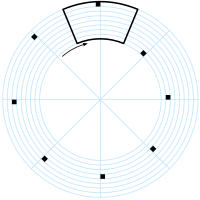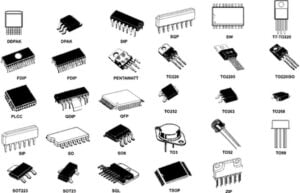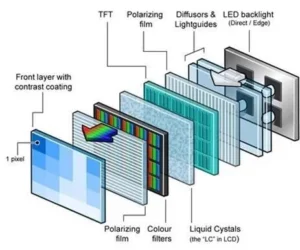LED Tv Repair Near you
Any queries please contact
Call 7770074243
Mechanical-LED Tv Repair Near you
Tv Repair Near you is Facsimile transmission systems for still photographs pioneered methods of mechanical scanning of images in the early 19th century. Alexander Bain introduced the facsimile machine between 1843 and 1846. Frederick Bakewell demonstrated a working laboratory version in 1851.
LED Tv Repair Near you
Willoughby Smith discovered the photoconductivity of the element selenium in 1873. As a 23-year-old German university student, Paul Julius Gottlieb Nipkow proposed and patented the Nipkow disk in 1884 in Berlin.Tv Repair Near you was a spinning disk with a spiral pattern of holes in it, so each hole scanned a line of the image. Although he never built a working model of the system, variations of Nipkow’s spinning-disk “image rasterizer” became exceedingly common.
Facsimile transmission systems for still photographs pioneered methods of mechanical scanning of images in the early 19th century. Alexander Bain introduced the facsimile machine between 1843 and 1846. Frederick Bakewell demonstrated a working laboratory version in 1851.[citation needed] Willoughby Smith discovered the photoconductivity of the element selenium in 1873. As a 23-year-old German university student, Paul Julius Gottlieb Nipkow proposed and patented the Nipkow disk in 1884 in Berlin.
LED Tv Repair Near you
This was a spinning disk with a spiral pattern of holes in it, so each hole scanned a line of the image. Although he never built a working model of the system, variations of Nipkow’s spinning-disk “image rasterizer” became exceedingly common.[14] Constantin Perskyi had coined the word television in a paper read to the International Electricity Congress at the International World Fair in Paris on 24 August 1900. Perskyi’s paper reviewed the existing electromechanical technologies, mentioning the work of Nipkow and others.[15] However, it was not until 1907 that developments in amplification tube technology by Lee de Forest and Arthur Korn, among others, made the design practical.
LED Tv Repair Near you
The first demonstration of the live transmission of images was by Georges Rigout and A. Fournier in Paris in 1909. A matrix of 64 selenium cells, individually wired to a mechanical commutator, served as an electronic retina. In the receiver, a type of Kerr cell modulated the light and a series of differently angled mirrors attached to the edge of a rotating disc scanned the modulated beam onto the display screen. A separate circuit regulated synchronization. The 8×8 pixel resolution in this proof-of-concept demonstration was just sufficient to clearly transmit individual letters of the alphabet. An updated image was transmitted “several times” each second.[17]LED Tv Repair Near you
In 1911, Boris Rousing and his student Vladimir Zworykin created a system that used a mechanical mirror-drum scanner to transmit, in Zworykin’s words, “very crude images” over wires to the “Braun tube” (cathode-ray tube or “CRT”) in the receiver. Moving images were not possible because, in the scanner: “the sensitivity was not enough and the selenium cell was very leggy”.[18]
In 1921, Edouard Belin sent the first image via radio waves with his belinograph.LED Tv Repair Near you
Baird in 1925 with his tele visor equipment and dummies “James” and “Stocky Bill” (right)
By the 1920s, when amplification made television practical, Scottish inventor John Logie Baird employed the Nipkow disk in his prototype video systems. On 25 March 1925, Baird gave the first public demonstration of televised silhouette images in motion, at Selfridges’s department store in London. Since human faces had inadequate contrast to show up on his primitive system, he televised a ventriloquist’s dummy named “Stooky Bill”, whose painted face had higher contrast, talking and moving.
Tv Repair Near you
By 26 January 1926, he had demonstrated the transmission of an image of a face in motion by radio. This is widely regarded as the world’s first public television demonstration. Baird’s system used the Nipkow disk for both scanning the image and displaying it.LED Tv Repair Near you A brightly illuminated subject was placed in front of a spinning Nipkow disk set with lenses which swept images across a static photocell. The thallium sulphide (Thalofide) cell, developed by Theodore Case in the U.S., detected the light reflected from the subject and converted it into a proportional electrical signal.
This was transmitted by AM radio waves to a receiver unit, where the video signal was applied to a neon light behind a second Nikon disk rotating synchronized with the first. The brightness of the neon lamp was varied in proportion to the brightness of each spot on the image. As each hole in the disk passed by, one scan line of the image was reproduced. Baird’s disk had 30 holes, producing an image with only 30 scan lines, just enough to recognize a human face. In 1927, Baird transmitted a signal over 438 miles (705 km) of telephone line between London and Glasgow.LED Tv Repair Near you
In 1928, Baird’s company (Baird Television Development Company/Cinema Television) broadcast the first transatlantic television signal, between London and New York, and the first shore-to-ship transmission. In 1929, he became involved in the first experimental mechanical television service in Germany. In November of the same year, Baird and Bernard Natan of Pathé established France’s first television company, Télévision-Baird-Natan.
Tv Repair Near you
In 1931, he made the first outdoor remote broadcast, of The Derby.In 1932, he demonstrated ultra-short wave television. Baird’s mechanical system reached a peak of 240-lines of resolution on BBC telecasts in 1936, though the mechanical system did not scan the televised scene directly. Instead a 17.5 mm film was shot, rapidly developed and then scanned while the film was still wet.
LED Tv Repair Near you\
Herbert E. Ives and Frank Gray of Bell Telephone Laboratories gave a dramatic demonstration of mechanical television on 7 April 1927. Their reflected-light television system included both small and large viewing screens. The small receiver had a 2-inch-wide by 2.5-inch-high screen (5 by 6 cm). The large receiver had a screen 24 inches wide by 30 inches high (60 by 75 cm). Both sets could reproduce reasonably accurate, monochromatic, moving images. Along with the pictures, the sets received synchronized sound.
The system transmitted images over two paths: first, a copper wire link from Washington to New York City, then a radio link from Whippany, New Jersey. Comparing the two transmission methods, viewers noted no difference in quality. Subjects of the telecast included Secretary of Commerce Herbert Hoover. A flying-spot scanner beam illuminated these subjects. The scanner that produced the beam had a 50-aperture disk. The disc revolved at a rate of 18 frames per second, capturing one frame about every 56 milliseconds.
LED Tv Repair Near you in mumbai
(Today’s systems typically transmit 30 or 60 frames per second, or one frame every 33.3 or 16.7 milliseconds respectively.) Television historian Albert Abramson underscored the significance of the Bell Labs demonstration: “It was in fact the best demonstration of a mechanical television system ever made to this time. It would be several years before any other system could even begin to compare with it in picture quality.”
In 1928, WRGB, then W2XB, was started as the world’s first television station. It broadcast from the General Electric facility in Schenectady, NY. It was popularly known as “WGY Television”. Meanwhile, in the Soviet Union, Léon Theremin had been developing a mirror drum-based television, starting with 16 lines resolution in 1925, then 32 lines and eventually 64 using interlacing in 1926. As part of his thesis, on 7 May 1926, he electrically transmitted, and then projected, near-simultaneous moving images on a 5-square-foot (0.46 m2) screen.
By 1927 Theremin had achieved an image of 100 lines, a resolution that was not surpassed until May 1932 by RCA, with 120 lines.
Tv Repair Near you
On 25 December 1926 Ke njiro Taka yanag i demonstrated a television system with 40-line resolution that employed a Nipkow disk scanner and CRT display at Hamamatsu Industrial High School in Japan. This prototype is still on display at the Takayanagi Memorial Museum in Shizuoka University, Hamamatsu Campus. His research in creating a production model was halted by the SCAP after World War II.[29] LED Tv Repair Near you
LED Tv Repair Near you-Lediha tv
Because only a limited number of holes could be made in the disks, and disks beyond a certain diameter became impractical, image resolution on mechanical television broadcasts was relatively low,LED Tv Repair Near you ranging from about 30 lines up to 120 or so. Nevertheless, the image quality of 30-line transmissions steadily improved with technical advances, and by 1933 the UK broadcasts using the Baird system were remarkably clear.[30] A few systems ranging into the 200-line region also went on the air.
Two of these were the 180-line system that Compagnie des Compteurs(CDC) installed in Paris in 1935,LED Tv Repair Near you and the 180-line system that Peck Television Corp. started in 1935 at station VE9AK in Montreal. The advancement of all-electronic television (including image dissectors and other camera tubes and cathode-ray tubes for the reproducer) marked the start of the end for mechanical systems as the dominant form of television.
LED Tv Repair Near you Mechanical television, despite its inferior image quality and generally smaller picture, would remain the primary television technology until the 1930s. The last mechanical telecasts ended in 1939 at stations run by a lot of public universities in the United States. LED Tv Repair Near you




